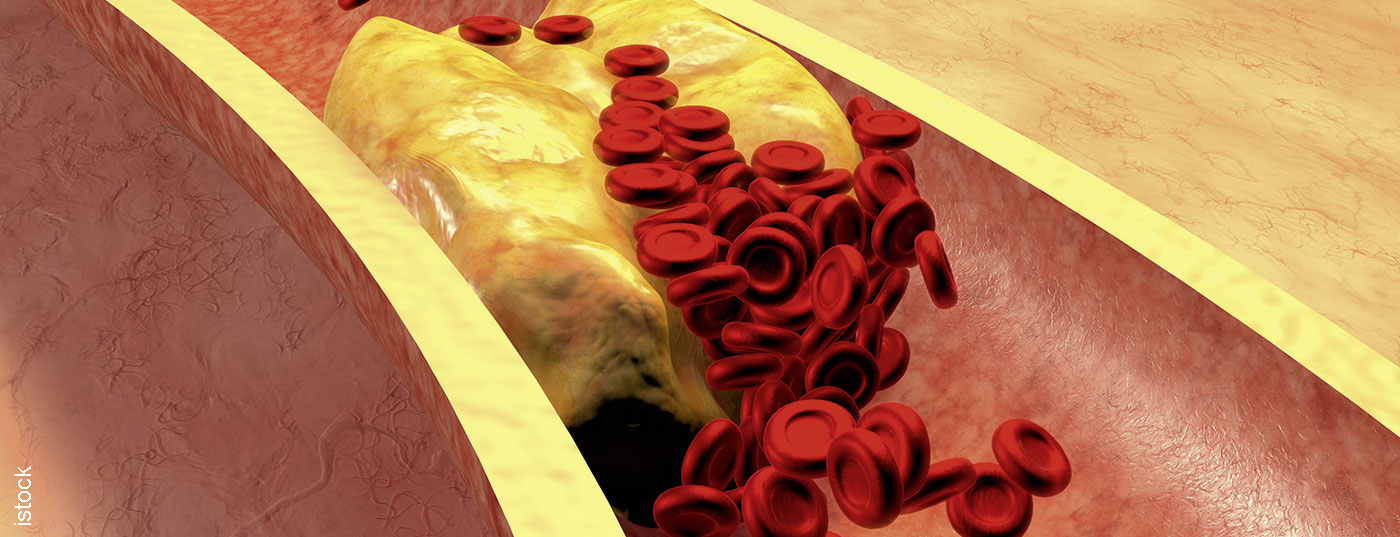Patients with familial hypercholesterolemia in homozygous expression and patients with severe hypercholesterolemia require extracorporeal removal of pathogenic proteins, protein-bound pathogenic substances, or cells from the blood. Lipoprotein apheresis appears to be effective in reducing the risk of adverse cardiovascular events.
Apheresis is the extracorporeal removal of pathogenic proteins, protein-bound pathogenic substances, or cells from the blood [1]. The plasma is separated from the cellular elements via an appropriate filter or with the aid of differential centrifugation. In plasmapheresis, plasma is usually replaced by an albumin solution. It is used, for example, in the treatment of highly sensitized patients to remove preformed HLA antibodies before planned kidney transplantation or in thrombotic microangiopathy after bone marrow transplantation [2].
Lipoprotein apheresis in focus
However, due to the loss of a broad spectrum of plasma proteins, plasmapherse is not indicated for long-term chronic treatments. Selective plasmapheresis, or lipoprotein apheresis, appears to be much more suitable for this purpose. After primary separation of the plasma, pathogenic proteins are removed from it by adsorption, precipitation or filtration, and the purified plasma is reinfused. This ensures greater specificity and almost complete return of blood components.
The apheresis treatment at a glance
With approximately 2000 patients annually, lipoprotein apheresis accounts for the largest proportion of specific apheresis procedures [3]. H.E.L.P., DALI, IA, MDF and DSA in particular have established themselves here. In heparin-induced extracorporeal lipoprotein/fibrinogen precipitation, for example, the separated plasma is mixed with an acetate buffer saturated with heparin. Thus, the acidity of plasma is lowered and LDL cholesterol, LPA, and fibrinogen form water-insoluble precipitates together with the heparin supplement. These can then be removed from the plasma in a filtration step. The plasma purified in this way and subsequently brought to a physiologically acceptable level by ultrafiltration is then mixed with the remaining blood components and returned to the patient [4].
Reduction of cardiovascular risk
Lipoprotein apheresis is performed in patients with homozygous familial hypercholesterolemia as well as in patients with severe hypercholesterolemia in whom the LDL cholesterol could not be sufficiently lowered with maximum dietary and drug therapy documented over twelve months. Adequate control of lipid levels is important, as elevated lipoprotein cholesterol and/or low-density lipoprotein(a) are established risk factors for cardiovascular disease.
Effectiveness proven in clinical application
A recent review [5] concluded, based on analysis of primarily observational data, that the efficacy of lipoprotein apheresis has been clearly demonstrated. In patients who did not respond to traditional lipid-lowering medications, lipoprotein apheresis effectively reduced serum lipoprotein levels and adverse cardiovascular events.
Literature:
- Bosch T: Ther Apher 5: 323-324, 2001.
- Apheresis standard of the German Working Group for Clinical Nephrology e.V. German Working Group for Clinical Nephrology e.V. 2002; 31:103.
- Koga N: Ther Apher 5: 219, 2001.
- www.bbraun.ch/de/produkte-und-therapien/extrakorporale-blutbehandlung/apherese.html (last accessed 03/31/2019)
- Rupesh R, et al: Role of Lipoprotein Apheresis in Cardiovascular Disease Risk Reduction. Blood Purif. 2019; 21: 1-16.
CARDIOVASC 2019; 18(2): 28











